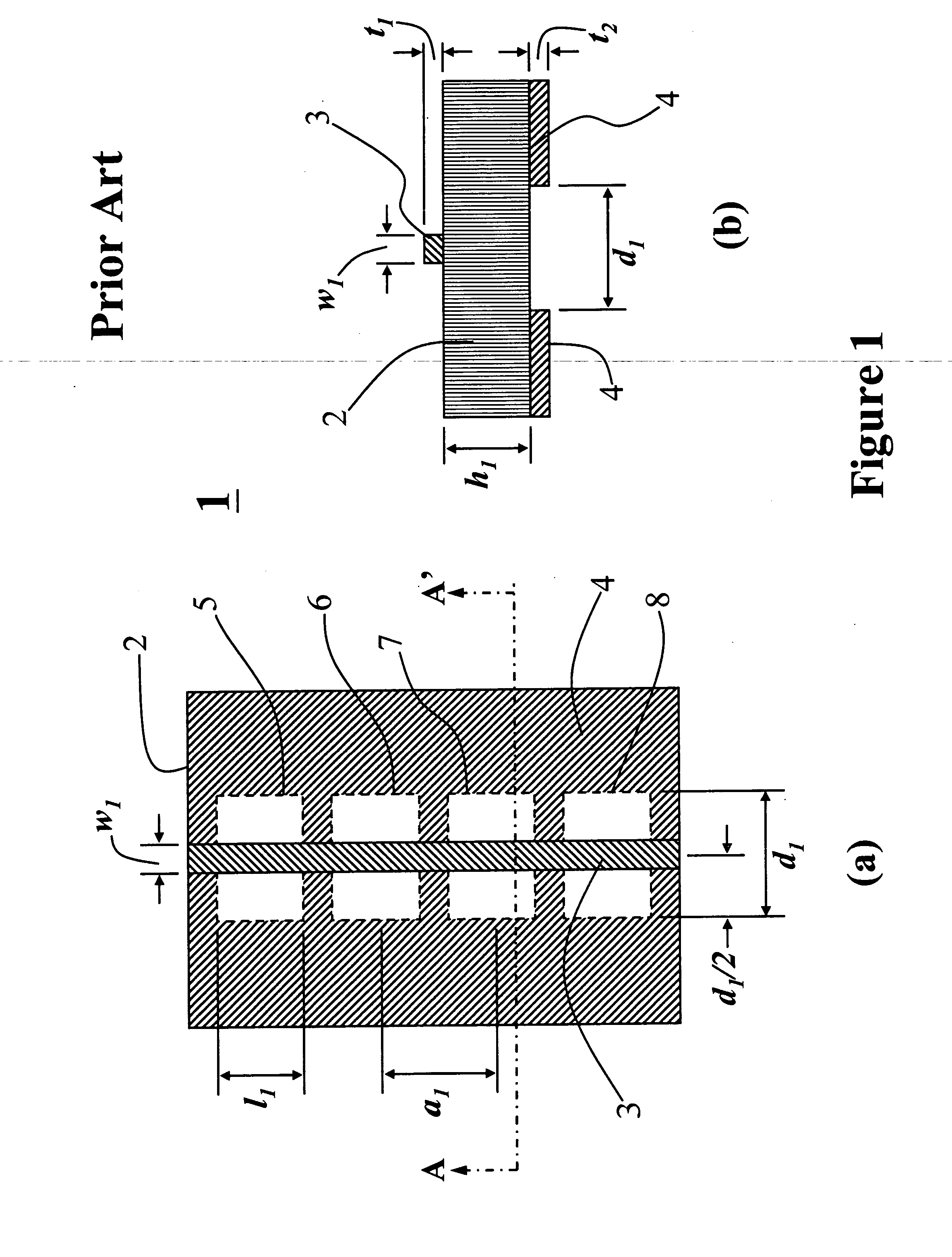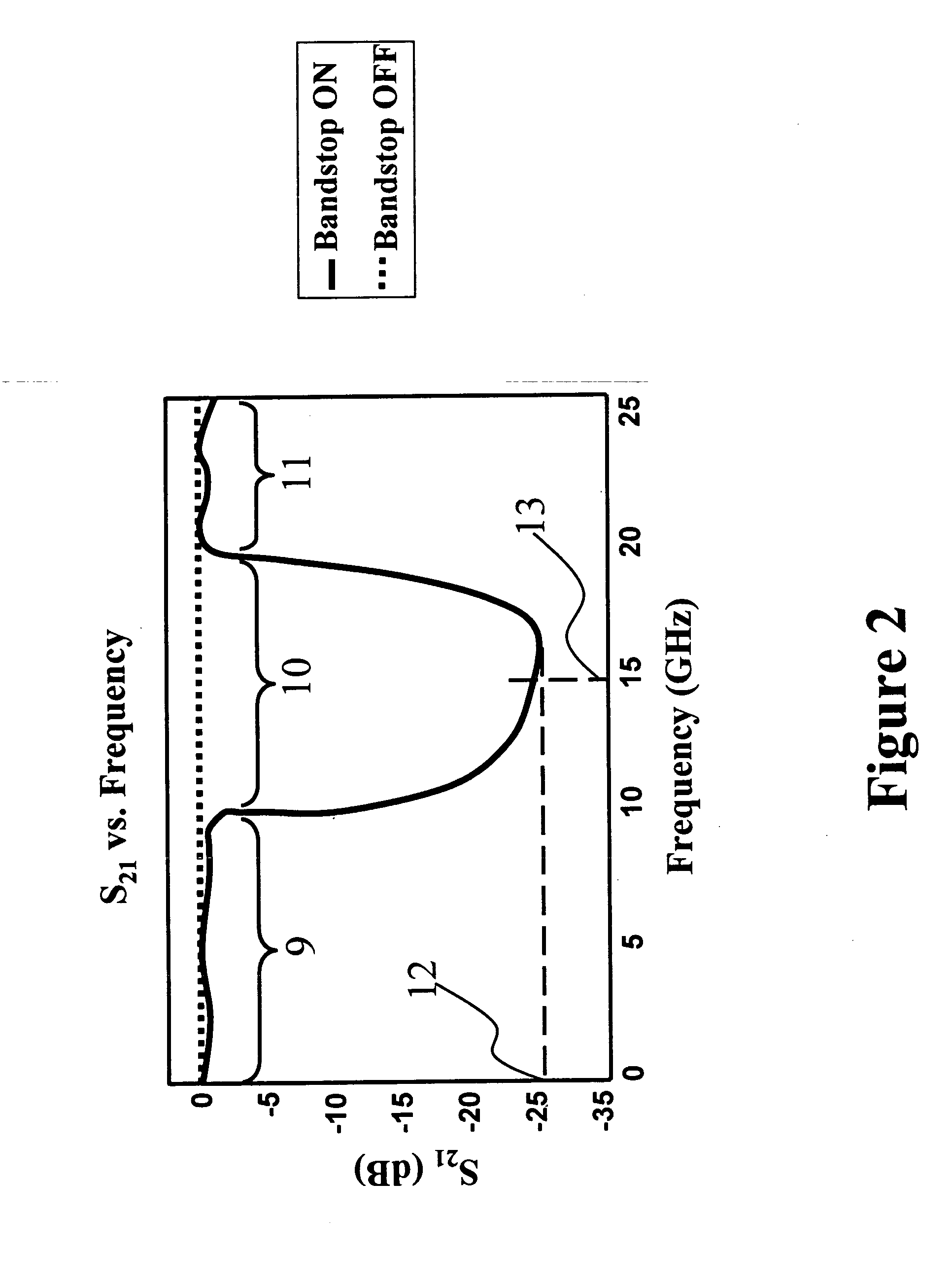Tunable photonic band gap structures for microwave signals
a photonic band gap and microwave signal technology, applied in the field of microwave components, can solve the problems of not being able to “switch off”, required dielectric substrate drilling to create perforations, etc., and achieve the effects of low loss, high isolation, and low operating power
- Summary
- Abstract
- Description
- Claims
- Application Information
AI Technical Summary
Benefits of technology
Problems solved by technology
Method used
Image
Examples
Embodiment Construction
[0032] One objective of this invention is to achieve the switching or tuning of PBG bandstop characteristics so a distinct bandstop is seen (“bandstop-on” state) and such bandstop becomes bandpass when the PBG is switched to a “bandstop-off” state. FIG. 6(a) and 6(b) show a top view and a cross-sectional view along B-B′ of a PBG structure 32 according to one embodiment of this invention. This PBG structure 32 consists of a microstrip line 33 with a width w5 and a thickness t3 deposited on the front surface of a dielectric substrate 34 of a thickness h2. A ground plane 35 with a thickness of t4 is deposited on the back surface of the dielectric substrate 34. The width w5 of the microstrip line 33 is selected according to the dielectric constant, thickness h2 of the electric substrate 34, and the impedance of the microstrip line required. Inside of the ground plane 35, four rectangular perforations 36, 37, 38, 39 with a length of l2 and a width of d2 are etched to form a one-dimension...
PUM
 Login to View More
Login to View More Abstract
Description
Claims
Application Information
 Login to View More
Login to View More - R&D
- Intellectual Property
- Life Sciences
- Materials
- Tech Scout
- Unparalleled Data Quality
- Higher Quality Content
- 60% Fewer Hallucinations
Browse by: Latest US Patents, China's latest patents, Technical Efficacy Thesaurus, Application Domain, Technology Topic, Popular Technical Reports.
© 2025 PatSnap. All rights reserved.Legal|Privacy policy|Modern Slavery Act Transparency Statement|Sitemap|About US| Contact US: help@patsnap.com



